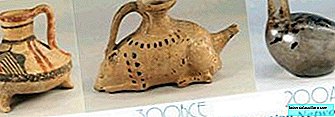
If anyone has ever wondered what they would be like the bottles in ancient times, before the boom of artificial lactation from the mid-twentieth century, and especially before the use of glass or plastic in our civilization, here is the answer.
Ceramic bottles have been found in Roman and Greek tombs, in American excavations in Arizona and in other archaeological expeditions that date even from the 1500 BC.
The bottles of yesteryear used to be made of mud, stone, metal and wood.
But the big question would be when and why were they used?
We know that for mothers with difficulties of breastfeeding or hypogalactia (absence of milk) the option valid throughout history has been the nurses, in some cases voluntary (solidarity mother to mother) or mercenary breastfeeding from the Renaissance, when rich mothers did not want to breastfeed because it reduces the chances of pregnancy and it was about having the maximum possible offspring (consider the high infant mortality).
That is why they hired other mothers of lower social class. In addition, mercenary breastfeeding also achieved birth control in the lower classes.
Therefore, perhaps those bottles were used with nursing babies when there were no available nurses, or with non-nursing babies to give them medicines, infusions, broths, juices, etc.
Be that as it may, it is interesting to see that before the multinationals of artificial milk exist the mothers of the world already solved the problems of feeding their children.
On the web below you can also see the development of the bottle during the last century with illustrations from the US Patent Office.












